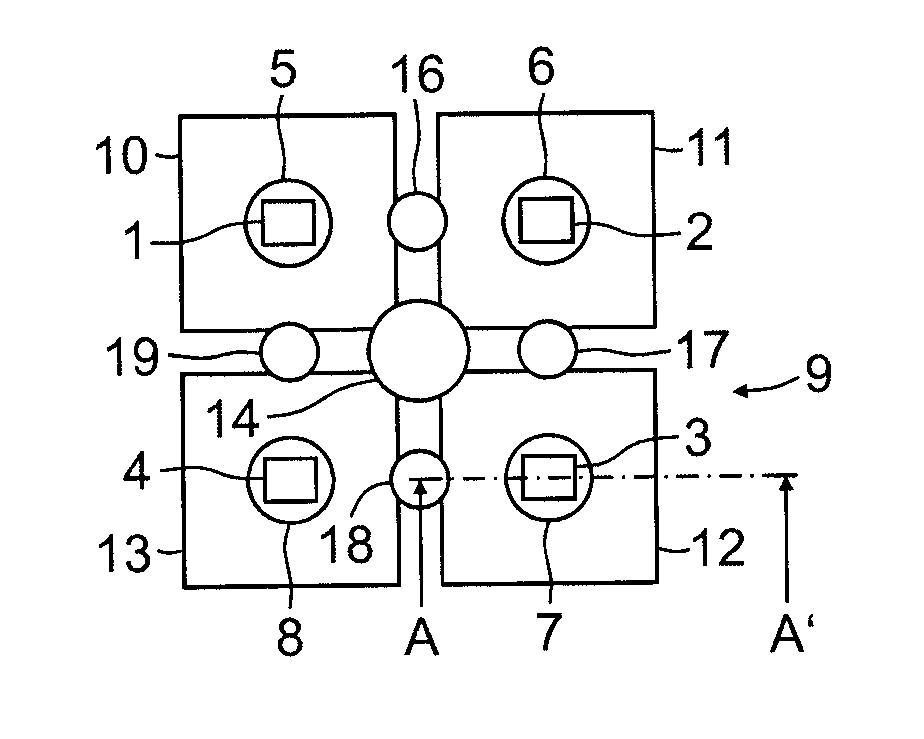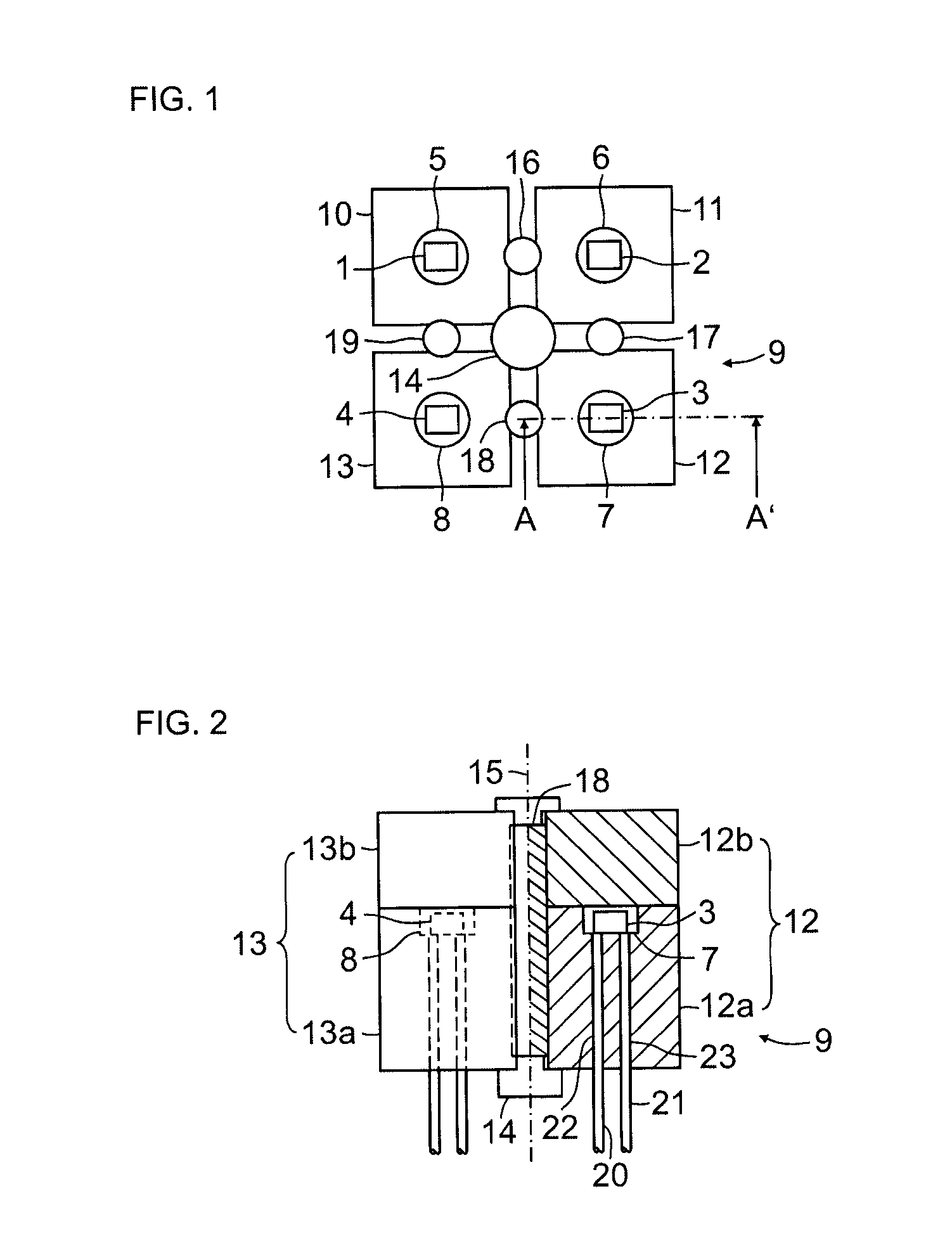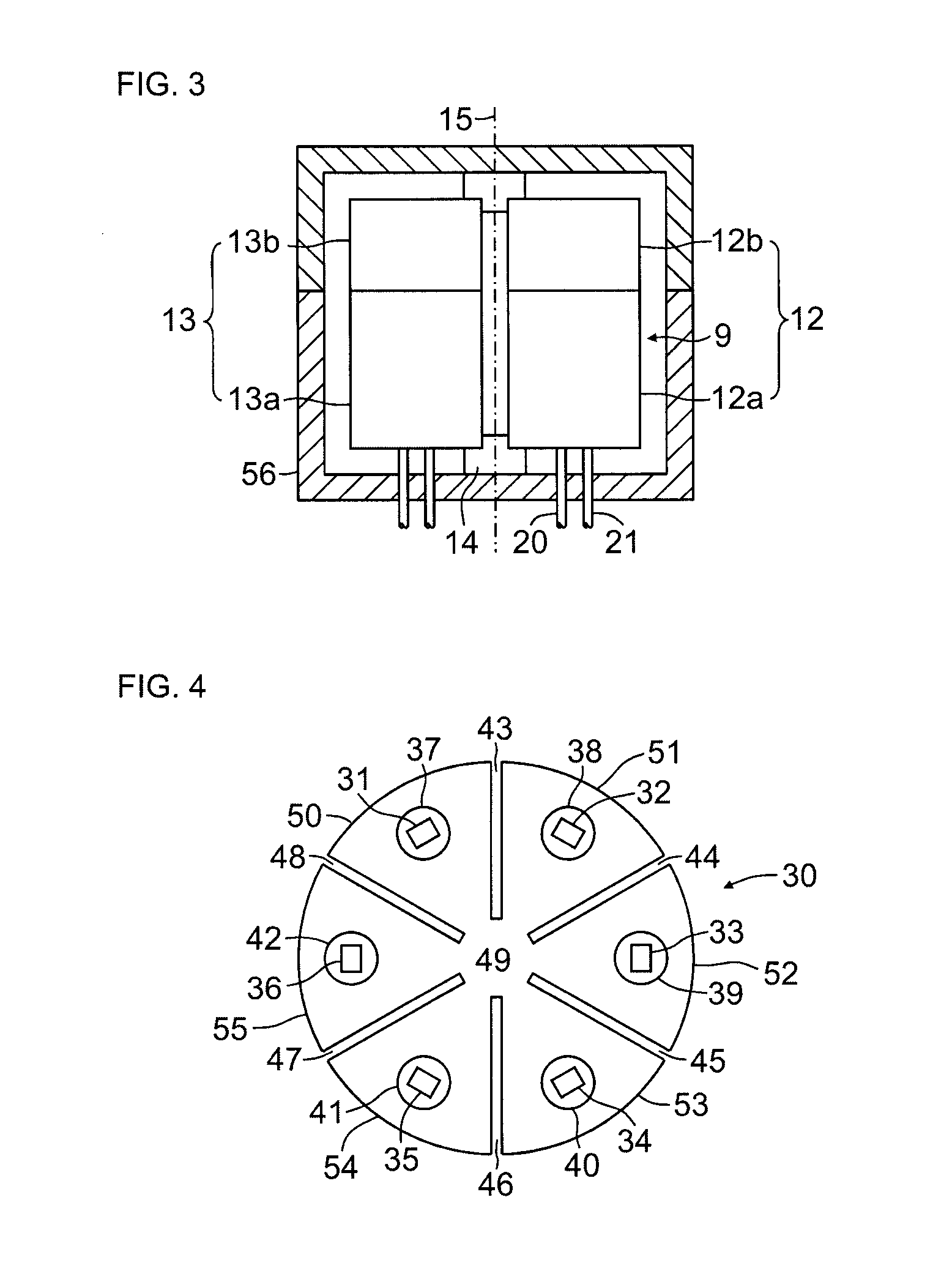Thermal conductivity detector
a detector and thermal conductivity technology, applied in the direction of material thermal conductivity, material thermal analysis, instruments, etc., can solve the problems of temporary temperature imbalance, limited detection limit of thermal conductivity detector, and different affecting of detector components, so as to improve the detection limit
- Summary
- Abstract
- Description
- Claims
- Application Information
AI Technical Summary
Benefits of technology
Problems solved by technology
Method used
Image
Examples
Embodiment Construction
[0020]The thermal conductivity detector shown in FIGS. 1 and 2 comprises four detector components 1, 2, 3, 4, which are accommodated in receptacles 5, 6, 7, 8 formed on the top side of a thermal conduction block 9. The thermal conduction block includes several parts and comprises four peripheral portions 10, 11, 12, 13 arranged around and in contact with a central portion 14. All portions 10-14 are made of a highly heat-conductive material such as brass, copper or aluminum.
[0021]In the shown example, the peripheral portions 10-13 each have a rectangular cross section and the central portion 14 has a circular cross section. Generally, the portions of the thermal conduction block 9 can be of any cross section as long as the peripheral portions 10-13 are equal and the central portion 14 is n-fold, here n=°4, rotationally symmetrical. Accordingly, the receptacles 5-8 and the detector components 1-4 contained therein are situated in a circle around a center axis 15 of the thermal conduct...
PUM
| Property | Measurement | Unit |
|---|---|---|
| thermal conductivity | aaaaa | aaaaa |
| diameter | aaaaa | aaaaa |
| electrical resistance | aaaaa | aaaaa |
Abstract
Description
Claims
Application Information
 Login to View More
Login to View More - R&D
- Intellectual Property
- Life Sciences
- Materials
- Tech Scout
- Unparalleled Data Quality
- Higher Quality Content
- 60% Fewer Hallucinations
Browse by: Latest US Patents, China's latest patents, Technical Efficacy Thesaurus, Application Domain, Technology Topic, Popular Technical Reports.
© 2025 PatSnap. All rights reserved.Legal|Privacy policy|Modern Slavery Act Transparency Statement|Sitemap|About US| Contact US: help@patsnap.com



